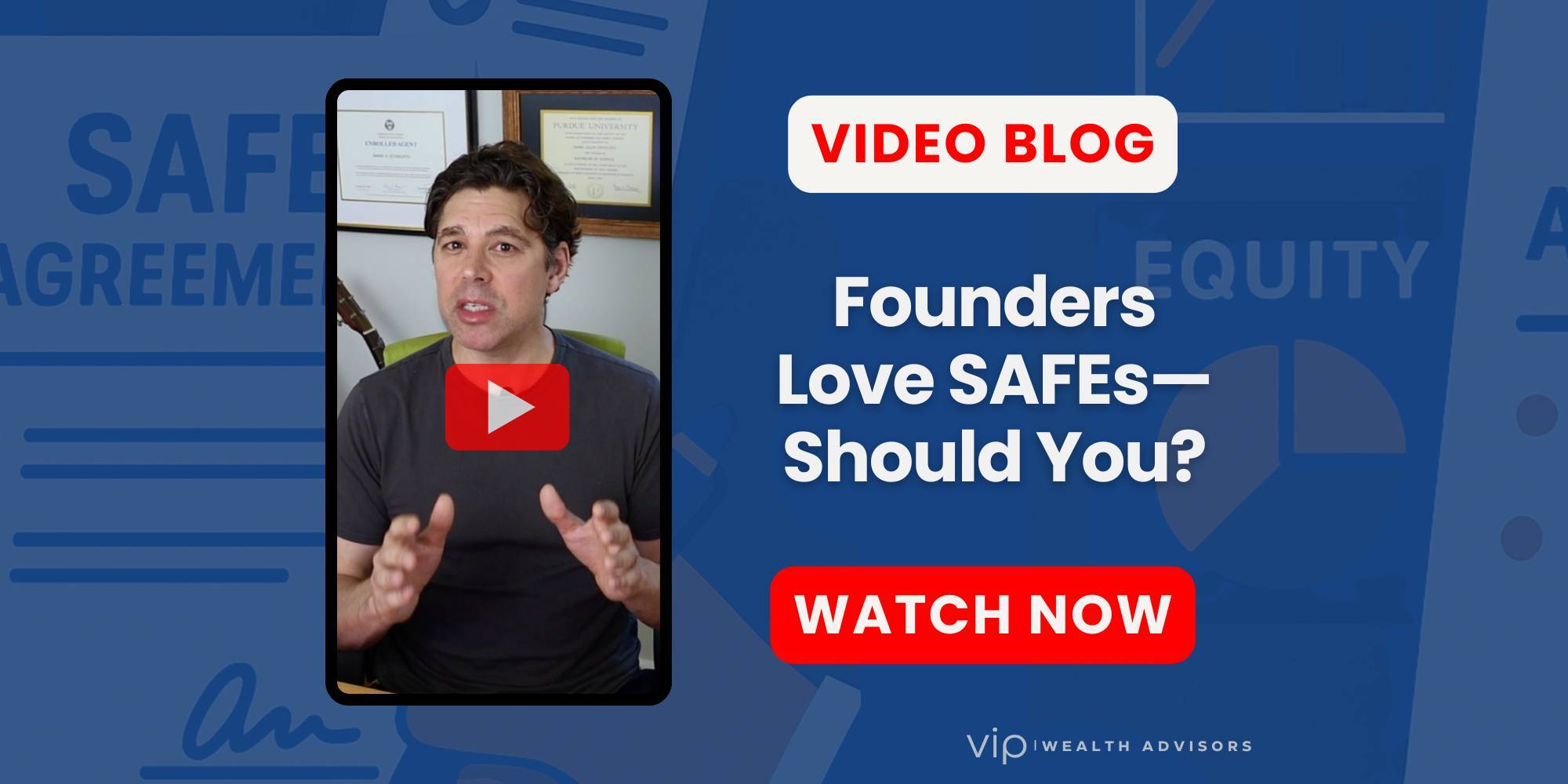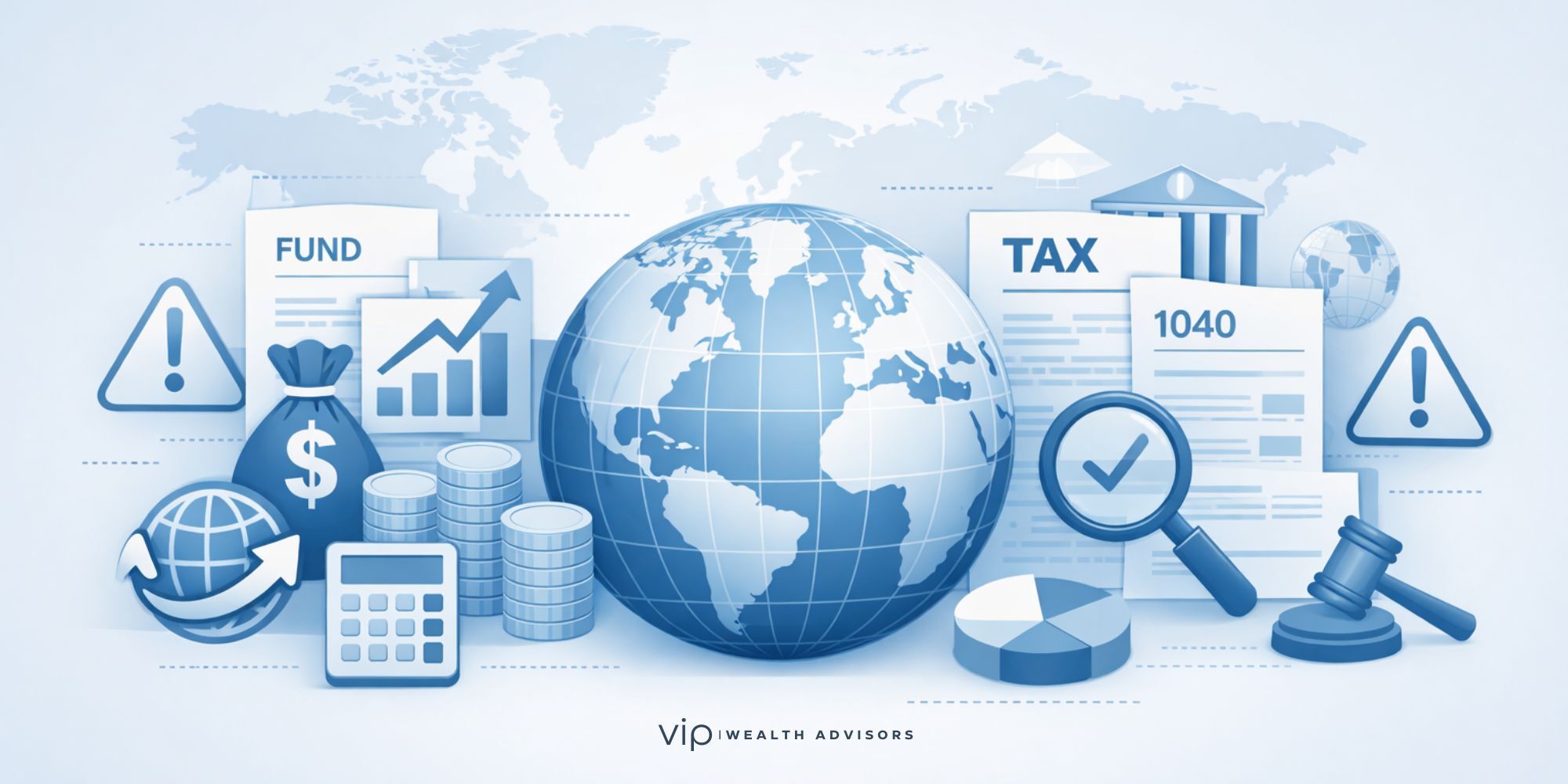Startups are a high-risk, high-reward arena. As a seasoned financial advisor with decades of experience guiding high-net-worth professionals, entrepreneurs, and investors through complex wealth decisions, I’ve noticed a surge of interest in early-stage venture investing. And with that interest comes one of the most misunderstood funding tools in the startup world: the SAFE agreement.
SAFEs — or Simple Agreements for Future Equity — have become the default investment vehicle for many pre-seed and seed-stage startups. They’re touted as fast, founder-friendly, and investor-accessible. However, behind their deceptively simple name lies a legal and financial instrument that can significantly impact your portfolio, for better or worse.
This article will demystify SAFEs, explain how they work, what to watch out for, how they’re taxed, and, most importantly, how to evaluate one with the precision and clarity that VIP Wealth Advisors brings to every financial decision.
What Is a SAFE?
A SAFE (Simple Agreement for Future Equity) is a contract between a startup and an investor. In exchange for upfront capital, the investor receives the right to convert that investment into equity at a later date, typically during the startup’s next priced financing round.
Initially introduced by Y Combinator in 2013 as a simpler alternative to convertible notes, SAFEs aim to streamline early-stage fundraising. Unlike traditional equity or debt instruments, SAFEs:
- Do not set a company valuation at the time of investment.
- Do not carry interest or a maturity date.
- Are not debt — there’s no repayment schedule.
Instead, SAFEs defer valuation until a future "trigger event" (usually the next funding round), at which point the SAFE converts into preferred shares based on the terms negotiated upfront.
Why Not Just Issue Shares Upfront?
That’s the obvious question — why wouldn’t a startup simply offer investors equity today?
The answer lies in three key realities:
- Valuations are often based on guesswork at the earliest stages. A company with an idea, no revenue, and a beta product is nearly impossible to value with precision.
- Equity rounds are expensive and time-consuming. Drafting a priced round involves lawyers, board resolutions, stock purchase agreements, and updated corporate charters.
- Founders want speed, investors wish for optionality. SAFEs allow both parties to defer valuation negotiations while still allowing capital to flow.
Put simply, SAFEs enable founders to raise money quickly and allow investors to lock in favorable future terms without the friction of pricing the company at the current time.
How a SAFE Works: Core Terms Investors Must Understand
While SAFEs are “simple” compared to priced rounds, their impact can be significant. Here are the most important elements to evaluate:
1. Valuation Cap
This is the maximum valuation at which your SAFE will convert into equity.
📊 Example: Valuation Cap in Action
You invest $100,000 with a $5 million cap. If the startup later raises a Series A at a $10 million valuation, your SAFE converts at $5 million — effectively doubling your equity compared to new investors.
💡 Investor Tip
A lower cap means more equity for you. This is your reward for taking early risk.
2. Discount Rate
This gives SAFE investors a percentage discount (typically 10–25%) on the price per share paid by new investors in a priced round.
If the SAFE includes both a valuation cap and a discount rate, you’ll convert at whichever gives you a better deal.
3. Post-Money vs. Pre-Money SAFE
The industry has shifted toward post-money SAFEs, where your ownership percentage is calculated after the SAFE money is accounted for. This provides investors with more clarity, but can cause unexpected dilution for founders.
👀 Investor Watch
If you care about your % stake in the company, post-money SAFEs give better visibility.
4. Conversion Triggers
Know exactly when and how your SAFE converts.
- Standard triggers include:
- Next priced financing round
- Sale of the company (liquidity event)
- IPO
- Company dissolution
5. Pro Rata Rights
Pro rata rights allow you to maintain your ownership percentage by investing more in future rounds.
These are not standard in all SAFEs, so if you want the right to follow-on, negotiate it up front.
6. MFN (Most Favored Nation) Clause
This clause ensures that if later investors get better terms (e.g., lower valuation cap), you get the same benefits retroactively. It’s a safeguard against being disadvantaged as an early backer.
7. Company Structure
SAFEs are designed to convert into preferred shares; however, if the startup isn’t yet a C corporation, it can’t issue stock. Many early-stage companies start as LLCs for tax simplicity and later convert to Delaware C corps before fundraising.
🚩 Investor Red Flag
Don’t sign a SAFE unless the company is already (or is about to become) a C corporation.
8. SAFE Stacking
Too many overlapping SAFEs can dilute the interests of everyone. Ask the founder:
- How many SAFEs have been issued?
- What is the total amount and valuation cap of each?
- What will the cap table look like after the conversion?
You want transparency. If they don’t know or won’t share — that’s a problem.
9. Repurchase or Early Redemption Rights
Some SAFEs allow the company to repurchase your SAFE before it converts, often at cost, or with minimal return. This strips away your long-term upside.
💼 Pro Tip
Avoid SAFEs with early buyout clauses unless they include a premium (e.g., 2x original investment).
Taxation of SAFEs: What You Need to Know
Despite their popularity, SAFEs exist in a gray area of tax law. Here’s how the IRS and tax professionals generally treat them:
❌ SAFEs Are Not Debt
No interest. No maturity. No scheduled repayment. So they’re not debt.
❌ SAFEs Are Not Equity (Yet)
You don’t own stock until the SAFE converts.
So, How Are SAFEs Taxed?
Generally, SAFEs are considered non-taxable at the time of issuance. The taxable event occurs when the SAFE converts or the investor realizes a gain. Here's how that breaks down:
📌 When the SAFE Converts to Equity:
- No immediate tax. Your cost basis becomes the amount you originally invested.
- Holding period for long-term capital gains begins at conversion, not when the SAFE was purchased.
💰 When You Sell the Converted Shares:
- Capital gains tax applies.
- Short-term if held < 1 year post-conversion.
- Long-term if held > 1 year post-conversion.
- Potentially eligible for Qualified Small Business Stock (QSBS) exclusion if conditions are met.
🚨 If the Company Fails:
You may be able to claim a capital loss, but only after the SAFE becomes worthless, and if the company dissolves or declares it formally.
Who Should Consider Investing in a SAFE?
SAFEs are appropriate for:
- Accredited investors seeking early-stage exposure.
- High-net-worth clients willing to take high risk for high reward.
- Tech insiders or angel syndicate members who have deep domain knowledge.
SAFEs are not ideal for:
- Risk-averse investors.
- Those needing liquidity.
- Clients expecting income or dividends.
Advisor Perspective: How We Guide Clients Through SAFEs
At VIP Wealth Advisors, we bring a dual lens to every client decision, combining technical expertise with strategic foresight. When advising clients exploring SAFEs, we help them:
- Analyze the deal terms using cap table modeling.
- Understand tax implications, including QSBS and capital gains potential.
- Evaluate founders and business models through a due diligence framework.
- Assess liquidity and risk tolerance within the context of their overall portfolio.
We also review SAFE agreements line-by-line and coordinate with tax counsel and legal teams to ensure the client’s interests are protected.
Final Thoughts: The Art and Risk of Future Equity
SAFEs offer a low-friction gateway to early-stage investing, but they are far from "set-it-and-forget-it" instruments. For all their simplicity, SAFEs require clear-headed analysis, thoughtful structuring, and trusted advisors who can distinguish between promise and peril.
At VIP Wealth Advisors, we understand the nuances behind startup capital structures, tax optimization, and risk-weighted investment decisions. Whether you're exploring your first angel investment or refining a portfolio with exposure to private markets, we're here to ensure every move aligns with your values, your vision, and your version of wealth.
📄 Ready to Discuss a SAFE Investment?
Let’s review your opportunity together—we’ll run the numbers, pressure-test the terms, and ensure you’re walking in with clarity, not confusion.
VIP Wealth Advisors guides tech professionals, angel investors, and founders through the complexities of startup equity and private market deals with confidence and precision.
📅 Schedule Your Strategy Call
View More Articles by Topic
- Taxes (76)
- Financial Planning (40)
- Equity Compensation (34)
- Investments (23)
- RSU (21)
- Tax Policy & Legislation (18)
- Business Owner Planning (15)
- Incentive Stock Options (14)
- Retirement (14)
- Psychology of Money (10)
- Alternative Investments (9)
- Real Estate (9)
- AMT (8)
- Pre-IPO Planning (8)
- Estate Planning (7)
- Fiduciary Standard (6)
- NSOs (6)
- The Boring Investment Strategy (6)
- Capital Gains Tax (5)
- Crypto (5)
- QSBS (5)
- Post-IPO Tax Strategy (4)
- 401(k) Strategy (3)
- Private Investments (3)
- Q&A (3)
- Charitable Giving (2)
- ETF Taxes (2)
- IRA Strategy (2)
- International Financial Strategies (2)
- Irrevocable Trust (2)
- Legacy Wealth (2)
- Market Insights (2)
- Market Timing (2)
- Stock Market (2)
- Venture Capital (2)
- Video (2)
- AUM vs Flat Fee (1)
- Altruist (1)
- Atlanta (1)
- Book Review (1)
- Depreciation & Deductions (1)
- Education Planning (1)
- Precious Metals (1)
- QTIP Trust (1)
- Revocable Trust (1)
- Schwab (1)
- Solo 401k (1)








